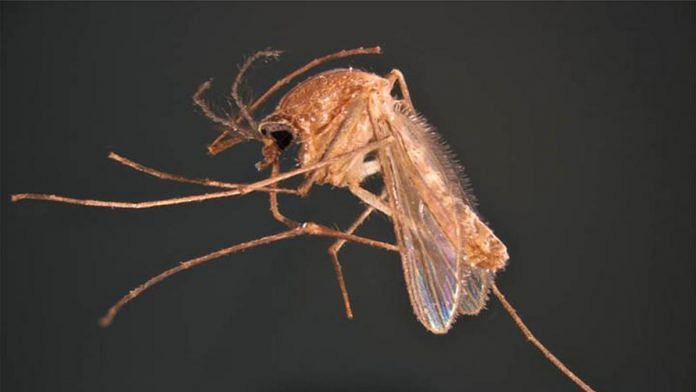Puducherry: As the Covid-19 fear wanes, infrastructure created for control of the virus could now be used for monitoring other diseases. The Vector Control Research Centre (VCRC) in Puducherry has sent a proposal to the central government for using the 3,000-odd laboratories across the country for surveillance of lymphatic filariasis.
Classified by the World Health Organisation (WHO) as a ‘neglected tropical disease’, lymphatic filariasis (LF) — also often referred to as haathi paon or elephantiasis as it is characterised by swollen, misshapen legs — is a vector-borne disease transmitted by mosquitoes.
India has missed several of its deadlines for elimination of the disease. It accounts for about 40 per cent of the global filariasis burden and 50 per cent of the global population at risk of infection. Culex quinquefasciatus, a type of mosquito, is the most efficient vector of the disease in India.
The VCRC, operating under the Indian Council of Medical Research (ICMR), is an institute working on the control of vector-borne diseases such as dengue, malaria, chikungunya etc.
“We have some 3,000 labs in the country currently with RT-PCR capacity. We have sent a proposal to the government to set up a xenomonitoring network for assessment of the presence of W. bancrofti, which is the causal agent of LF. We have started two projects in Simdega (Jharkhand) and Yadagiri (Karnataka) for this. The idea is to test several thousand mosquitoes for the pathogen in these labs,” VCRC Director Dr Ashwani Kumar told reporters Tuesday.
Xenomonitoring refers to the detection of human pathogens in insects. While the initial proposal is for LF, VCRC hopes this can later be expanded to monitoring of a broad spectrum of diseases for which the institute has developed multiplex PCR tests.
He explained that the challenge in LF surveillance among humans is that the pathogen only starts circulating in the blood after 9 pm.
“The mosquito feeds at night, so the pathogen circulates in the peripheral blood only at night while for the rest of the day, it hides away in the lungs. This is one of the smart evolutions that they have undergone to maximise their chances of spreading. But people do not take kindly to health workers coming at night for this. The xenomonitoring plan can help with that. If we are to eliminate LF by 2030, we need more tools to tackle it,” Dr Kumar added.
Also Read: 45% of samples sequenced in India since January had Omicron, shows Covid lab network INSACOG
Breeding mosquitoes on a special diet
The institute is also currently breeding mosquitoes in captivity for the transmission of a bug imported from Australia’s Monash University that prevents the Aedes mosquito from harbouring the dengue virus.
“There is a bug called Wolbachia. When it is in the mosquito, it prevents it from becoming a dengue carrier. So, we imported about 10,000 mosquito eggs from Monash University under special permission and started breeding mosquitoes here. The bug is maternally transmitted. We have seen that when the father carries the bug, the next generation dies out, so we breed Indian males and Australian females. But there are ethical issues about releasing mosquitoes into the wild. So we are currently doing virus challenge studies in the laboratory as proof of concept,” Dr Kumar said.
The mosquitoes are on a special diet that gives them the necessary nutrition, and are fed with a special feeder designed in-house. The diet comprises an effective protein source, amino acids, minerals, carbohydrates, salts, and water suitable for viable egg production and colony maintenance of the insects, explained the VCRC director.
The feeding device comprises a reservoir for keeping the diet and a feeding platform, along with microprocessor-controlled temperature monitoring and a heating source.
“The Wolbachia strategy has been tried in 11 countries at a pilot scale as a demonstration project for control of dengue. In Indonesia, its success rate is 71 per cent. In Australia, it has shown to be effective in reducing the disease to the extent of 95 per cent as compared to controls. Singapore, on the other hand, is using males to control future populations,” Dr Kumar added.
In India, the experiment is still at the lab stage. VCRC has tried to use it for both dengue and chikungunya elimination, and has submitted the studies to ICMR. They have now been asked to repeat the virus challenge studies for certainty.
An earlier version of the report erroneously said Covid is waning. The error is regretted.
(Edited by Gitanjali Das)
Also Read: In Firozabad, ‘dengue-like’ disease has killed 32 kids in 11 days. No one knows what it is






